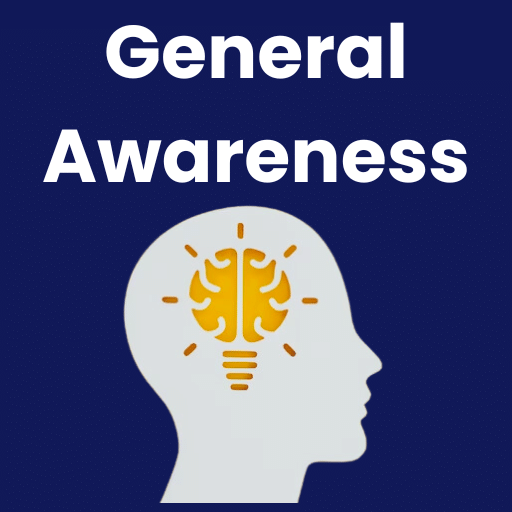Source Based Questions: Rebels and the Raj | History Class 12 - Humanities/Arts PDF Download
Q1: Read the source below and answer the questions that follow:
Late in the afternoon of 10 May 1857, sepoys in the cantonment of Meerut broke out in mutiny. The sepoys seized the bell of arms, attacked white people, and destroyed government buildings, including the record office, jail, and treasury. The sepoys then rode towards Delhi, spreading the mutiny.
i. What triggered the mutiny in Meerut? (1 mark)
ii. How did the sepoys' actions escalate after the initial revolt? (2 marks)
iii. What was the significance of the sepoys reaching Delhi? (1 mark)
Ans:
i. The mutiny in Meerut was triggered by the sepoys' refusal to use the new cartridges, which were believed to be greased with cow and pig fat, corrupting their faith.
ii. After the revolt, the sepoys took significant actions that escalated the situation:
- They seized arms from military depots.
- They attacked white civilians in various locations.
- They destroyed government buildings to demonstrate their resistance.
- They moved towards Delhi, aiming to gain support and legitimacy for their cause.
iii. The sepoys reaching Delhi marked a significant turning point, as the rebellion gained the support of the Mughal emperor, Bahadur Shah Zafar, and legitimized the uprising.
Q2: Read the source below and answer the questions that follow:
The sepoys reached the gates of the Red Fort in Delhi and sought Bahadur Shah Zafar’s blessings. They explained that they were rebelling against the British for desecrating their faith by forcing them to use the cartridges.
i. How did Bahadur Shah Zafar become involved in the revolt? (1 mark)
ii. Why did the sepoys seek the emperor’s blessings? (2 marks)
iii. How did the emperor’s involvement affect the rebellion? (1 mark)
Ans:
i. Bahadur Shah Zafar became involved when the sepoys sought his support and blessings to legitimize their revolt, appealing to his authority as the Mughal emperor.
ii. The sepoys sought the emperor’s blessings to gain both moral and political legitimacy for their rebellion. His endorsement could help to unify the people and lend credibility to the mutiny.
iii. The emperor’s involvement gave the rebellion a sense of authority and unity, as the revolt was carried out in his name, making it more organized and widespread.
Q3: Read the source below and answer the questions that follow:
Rumours about the British spreading a conspiracy to destroy the caste and religion of Hindus and Muslims circulated across India. The rumour about greased cartridges and the British attempting to convert Indians to Christianity fueled the fear and anger of the sepoys.
i. What was the nature of the rumours circulating among the sepoys? (1 mark)
ii. How did these rumours affect the response of the sepoys? (2 marks)
iii. Why were rumours so powerful in the context of the revolt? (1 mark)
Ans:
i. The rumours suggested that the British were attempting to destroy Hindu and Muslim religious practices, including using cow and pig fat on cartridges, and that they were trying to convert Indians to Christianity.
ii. The rumours instilled a sense of fear and mistrust of the British among the sepoys. This emotional response motivated them to rebel and take action against what they perceived as a religious threat.
iii. Rumours were powerful because they resonated with existing fears, religious beliefs, and suspicions, and they spread quickly in a time of widespread discontent.
Q4: Read the source below and answer the questions that follow:
Shah Mal, a local leader in Awadh, mobilized the villagers against the British after their oppressive land revenue policies. He led a rebellion, destroyed government infrastructure, and created an alternative administration.
i. Who was Shah Mal, and what role did he play in the revolt? (1 mark)
ii. What actions did Shah Mal take during the rebellion? (2 marks)
iii. Why was Shah Mal considered a symbol of resistance in Awadh? (1 mark)
Ans:
i. Shah Mal was a local Jat leader in Awadh who mobilized villagers against the British to resist their oppressive land policies.
ii. Shah Mal played a significant role in the rebellion by:
- Organising attacks on government buildings.
- Disrupting communication networks.
- Establishing an alternative administration for the people.
iii. Shah Mal became a symbol of resistance because he fought against British oppression and gave hope to the people by leading a successful local uprising.
Q5: Read the source below and answer the questions that follow:
The taluqdars, or landowners, of Awadh lost their land and power after the British annexed the region. The British land revenue policies led to widespread unrest among the taluqdars, who later joined the rebellion.
i. Who were the taluqdars, and why did they join the rebellion? (1 mark)
ii. How did the British land revenue policies affect the taluqdars? (2 marks)
iii. What was the significance of the taluqdars’ involvement in the rebellion? (1 mark)
Ans:
i. The taluqdars were local landowners in Awadh who had been displaced by the British annexation and land policies, leading them to join the rebellion against British rule.
ii. The British land revenue policies, particularly the Summary Settlement of 1856, significantly undermined the taluqdars. These policies resulted in:
- A reduction in their landholdings.
- An increase in the taxes they were required to pay.
As a consequence, the taluqdars experienced considerable discontent and frustration.
iii. The involvement of taluqdars added significant weight to the rebellion, as they brought both resources and influence, mobilizing peasants and other local leaders to resist the British.
Q6: Read the source below and answer the questions that follow:
The Azamgarh Proclamation, issued in August 1857, called on the people of Hindostan to unite against British tyranny and highlighted the grievances of different social groups, including zamindars, merchants, and public servants.
i. What was the primary message of the Azamgarh Proclamation? (1 mark)
ii. How did the proclamation appeal to different social groups? (2 marks)
iii. Why was the proclamation significant in the context of the revolt? (1 mark)
Ans:
i. The primary message of the Azamgarh Proclamation was a call for unity among Hindus and Muslims to resist British rule, citing the grievances of various social groups.
ii. The proclamation appealed to different social groups in various ways:
- Zamindars were attracted by promises of light revenue demands.
- Merchants were enticed by the offer of freedom in trade.
- Public servants were motivated by the prospect of better wages and positions in the future.
iii. The proclamation was significant as it sought to unite different sections of society, creating a broad base of support for the revolt and articulating the vision of an alternative governance system.
 |
Download the notes
Source Based Questions: Rebels and the Raj
|
Download as PDF |
Q7: Read the source below and answer the questions that follow:
Maulvi Ahmadullah Shah was a prominent figure in the revolt of 1857, leading a large following as he preached against British rule. His leadership and courage made him a key figure in the resistance.
i. Who was Maulvi Ahmadullah Shah, and what role did he play in the revolt? (1 mark)
ii. How did his leadership contribute to the success of the rebellion? (2 marks)
iii. Why was Maulvi Ahmadullah Shah considered a symbol of resistance? (1 mark)
Ans:
i. Maulvi Ahmadullah Shah was a religious leader who mobilized peasants and soldiers in the revolt, preaching against British rule and leading several key battles.
ii. His leadership significantly contributed to the success of the rebellion by uniting large groups of Muslims and Hindus. He inspired them through his calls for religious and political resistance.
iii. Ahmadullah Shah became a symbol of resistance because of his courage, religious authority, and his ability to rally people to the cause of fighting British imperialism.
Q8: Read the source below and answer the questions that follow:
Rumours about the British wanting to destroy Indian religions and culture, coupled with prophecies of British defeat, played a significant role in rallying the population for the revolt of 1857.
i. What role did rumours and prophecies play in the revolt? (1 mark)
ii. How did the British attempt to address the rumours about the cartridges? (2 marks)
iii. Why were these rumours so powerful among the sepoys and common people? (1 mark)
Ans:
i. Rumours and prophecies about British intentions to destroy Indian religions and culture stirred fear and anger, motivating people to join the rebellion.
ii. The British attempted to address the rumours by denying that the cartridges were greased with animal fat, but the explanations failed to calm the sepoys.
iii. These rumours were powerful because they resonated with the existing fears of the sepoys and common people, amplifying their distrust and anger towards the British.
Q9: Read the source below and answer the questions that follow:
The British used military power and new laws to suppress the revolt, declaring martial law and allowing military officers to punish suspected rebels without trials.
i. What measures did the British take to suppress the rebellion? (1 mark)
ii. How did the British use the media to justify their actions? (2 marks)
iii. Why was repression a central part of the British response? (1 mark)
Ans:
i. The British declared martial law, gave military officers the power to execute rebels without trials, and deployed reinforcements to suppress the rebellion.
ii. The British used newspapers and visual representations to justify their actions, portraying the rebels as violent and brutal, calling for retribution.
iii. Repression was central because the British viewed the revolt as a direct challenge to their authority, and they aimed to restore control through force and intimidation.
Q10: Read the source below and answer the questions that follow:
British propaganda depicted the rebels as barbaric and brutal, often focusing on the violence against women and children. These depictions played a role in justifying the harsh British response.
i. How did British propaganda shape public opinion about the revolt? (1 mark)
ii. What emotions were evoked by the British portrayal of the rebels? (2 marks)
iii. Why was propaganda important for the British during the revolt? (1 mark)
Ans:
i. British propaganda shaped public opinion by demonizing the rebels, depicting them as barbaric and violent, thus justifying the need for harsh reprisals.
ii. The propaganda evoked anger, fear, and a desire for revenge, particularly through the portrayal of violence against women and children.
iii. Propaganda was important as it helped maintain British morale, justified military action, and ensured continued public support for the brutal suppression of the rebellion.
|
30 videos|239 docs|25 tests
|
FAQs on Source Based Questions: Rebels and the Raj - History Class 12 - Humanities/Arts
| 1. What were the main causes of rebellion during the British Raj in India? |  |
| 2. How did the Indian Rebellion of 1857 impact British colonial policy? |  |
| 3. Who were some key figures in the Indian independence movement during the Raj? |  |
| 4. What role did social reform movements play during the British Raj? |  |
| 5. How did the British use propaganda to maintain control over India during the Raj? |  |


























